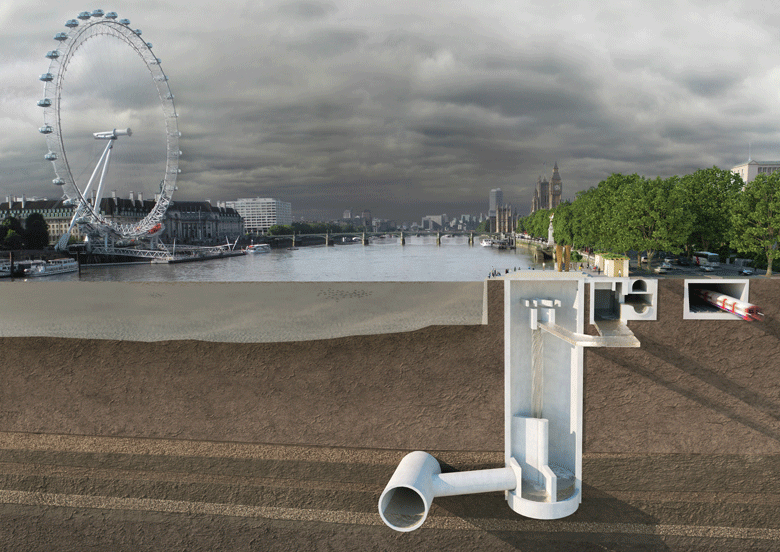

The Thames Tideway Tunnel in London is one of the most complex construction projects of its type in Europe. At $6.2bn, the 25 kilometre-long, 66 metre-deep tunnel is the UK’s largest-ever water project and is designed to protect London’s River Thames from sewage pollution for the next 100 years.
It is being built under three major contract packages and the eastern section of the new 7.2m-diameter sewer is under construction by a joint venture of the UK’s Costain, France’s Vinci Construction Grands Projets and Bachy Soletanche. Working with lead designer Mott MacDonald, the team has embraced model-based delivery for design, replacing paper-based documentation required for traditional design milestones through stage gate reviews with digital information. The result has been a reduction of the design schedule by six months and design resources by 32 per cent.
 In a traditional project, even those using Building Information Modelling (BIM), 2D information via a series of drawings is prepared and handed over to the client for review and approval at each of the design stage gates. On the Thames Tideway East contract, these stage gates are: brief, concept, developed, detailed, construction and operation.
In a traditional project, even those using Building Information Modelling (BIM), 2D information via a series of drawings is prepared and handed over to the client for review and approval at each of the design stage gates. On the Thames Tideway East contract, these stage gates are: brief, concept, developed, detailed, construction and operation.
Providing the physical information for these stages takes a lot of time as clients review and question the drawings, which then require updating and reissuing before final approval will be given. However, as the design evolves, these drawings quickly become outdated, leading to wasted time and effort. It can also mean that some designers continue working on the latest version of the model, when others are using earlier versions to cut the drawings – meaning there is more than one version of the design in circulation.
Design model
Instead the Thames Tideway East team moved away from this 2D paper-based approach and introduced model-based delivery into the concept and developed design gates. Information was shared through the design model, which was accessible to all parties involved in the project. Data was delivered to the client within the project model within hours (an average of 0.9 days), rather than days or weeks.
As a design-and-build contract, collaboration between the contractor and the designer was crucial and required very early appreciation from the designer of the construction methodologies to be employed by the contractor, who in turn had to make early decisions about their requirements to inform design.
[caption id="attachment_326968" align="aligncenter" width="780"] Model-based delivery versus drawing-based delivery. [/caption]
Model-based delivery versus drawing-based delivery. [/caption]
Since the contract was awarded in September 2015, all parties have met weekly to discuss design development on what is described as BIM Wednesday. This clarity and collaboration enables the client and contractor to monitor design evolution and gain confidence as it progresses.
Required stage gate review information is shared in the model and approval for this information on first review cycle is now at 82 per cent, up from 76 per cent six months ago. Although this is considered to be high, comparing it to traditional approaches is not easy, because historically this data has not been digital, and not been measured. Having hard data on revisions and updates is another benefit of the model-led delivery approach.
Using Bentley’s cloud-based ProjectWISE common data environment, the team used software applications such as AECOSim Building Designer to view the model in both 3D and 2D. Although these tools were critical, the project team says that the initial collaborative approach and the move away from transactional assurance into a digital delivery is what has really accelerated design.
This article was originally published in MEED Mashreq Construction Report Vol 3: Delivering Innovation in Construction, in April 2018.

This article is extracted from a report produced by MEED and Mashreq titled Delivering Innovation in Construction. Click here to download the report
You might also like...

Rainmaking in the world economy
19 April 2024

Oman receives Madha industrial city tender prices
19 April 2024

Neom seeks to raise funds in $1.3bn sukuk sale
19 April 2024

Saudi firm advances Neutral Zone real estate plans
19 April 2024
A MEED Subscription...
Subscribe or upgrade your current MEED.com package to support your strategic planning with the MENA region’s best source of business information. Proceed to our online shop below to find out more about the features in each package.





